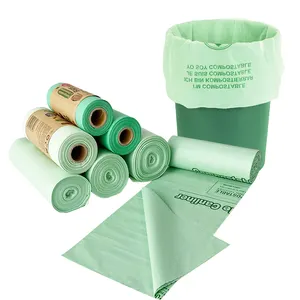Degradable Plastic Bags: An Overview
Degradable plastic bags have become a cornerstone in the packaging industry, serving a myriad of purposes from food storage to retail packaging. These bags are engineered to address both consumer storage needs and environmental concerns, offering a practical solution for businesses and consumers alike. With a focus on sustainability, degradable polythene bags are gaining traction as a responsible choice for those looking to minimize their ecological footprint.
Types and Features of Degradable Bags
The market offers a variety of degradable bags, including oxo biodegradable bags and bio degradable bags. Oxo biodegradable options, such as oxo degradable plastic bags, incorporate additives that promote oxidation and lead to fragmentation and biodegradation. On the other hand, bio degradable plastic bags are made from materials like cornstarch and wheat, which break down naturally over time. These products are designed to degrade more rapidly than traditional plastics, helping to reduce landfill mass and the release of harmful substances into the environment.
Applications and Advantages
Degradable plastic bags are versatile, used for packaging small items like spices and pharmaceuticals, or as degradable carrier bags in retail. Their ability to maintain product freshness and prevent contamination is crucial in food safety and shelf-life extension. The environmental benefits are significant, as these bags contribute less to pollution and are a step towards reducing plastic waste. For businesses, using bags with environmental credentials, such as d2w biodegradable bags or epi biodegradable bags, can enhance brand image and customer loyalty.
Material Composition and Degradation Process
Materials used in degradable polythene and oxo biodegradable plastic bag production are chosen for their ability to break down efficiently. The degradation process for these materials involves exposure to natural elements like heat, light, and oxygen, leading to the breakdown of the plastic into water, carbon dioxide, and biomass. This contrasts with non degradable plastic bags, which persist in the environment for much longer periods.
Customization and Marketing Potential
Customization options for degradable plastic bags are vast, allowing businesses to imprint messages or logos, turning a simple bio degradable carrier bag into a mobile advertisement. While not a direct sales pitch, a message of gratitude or an eco-friendly statement can resonate with customers, aligning with the values of a conscientious consumer base.
Choosing the Right Degradable Bag
Selecting the appropriate degradable bag—be it d2w oxo biodegradable plastic, epi degradable bags, or another type—depends on the specific needs of the business and its commitment to sustainability. Factors such as the intended use, required strength, and desired degradation rate will guide the decision-making process, ensuring that the chosen solution aligns with both business objectives and environmental responsibility.











































 浙公网安备 33010002000092号
浙公网安备 33010002000092号 浙B2-20120091-4
浙B2-20120091-4